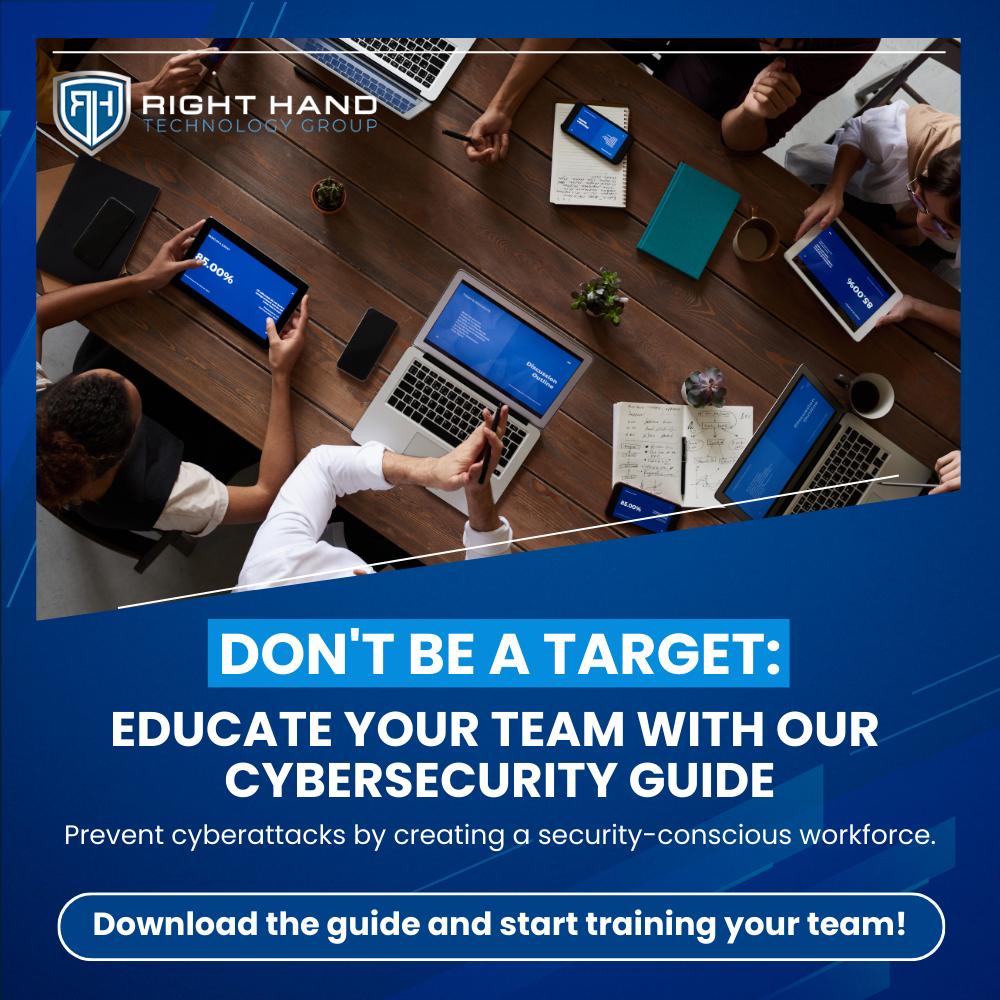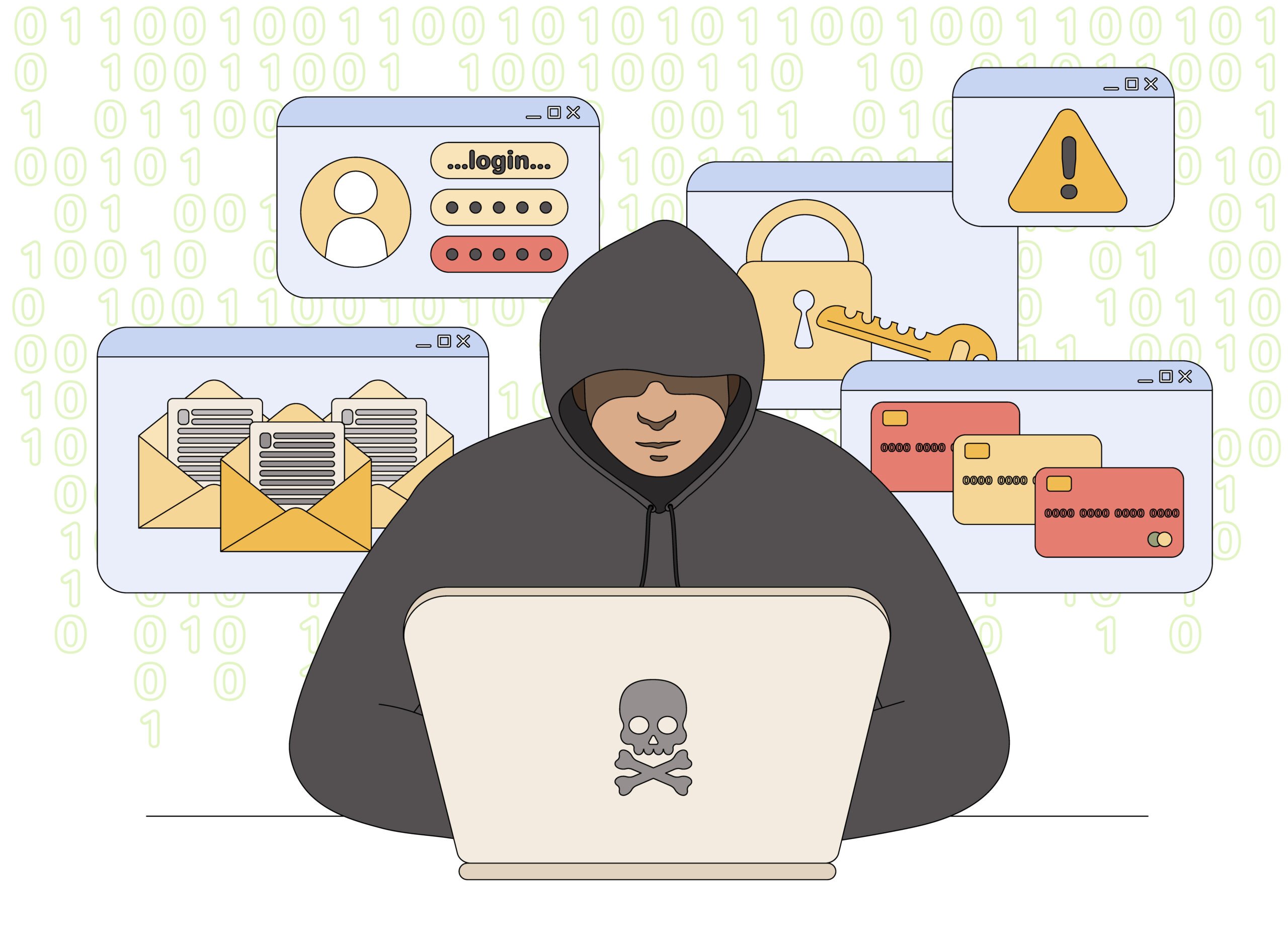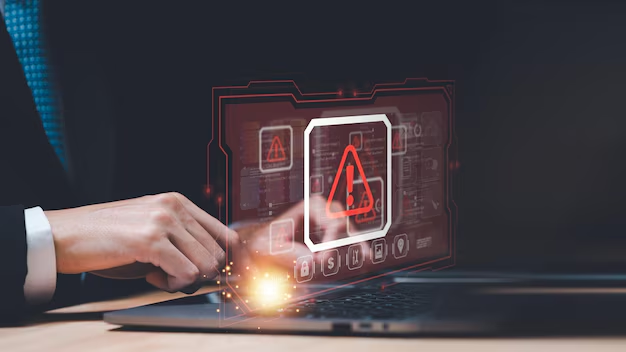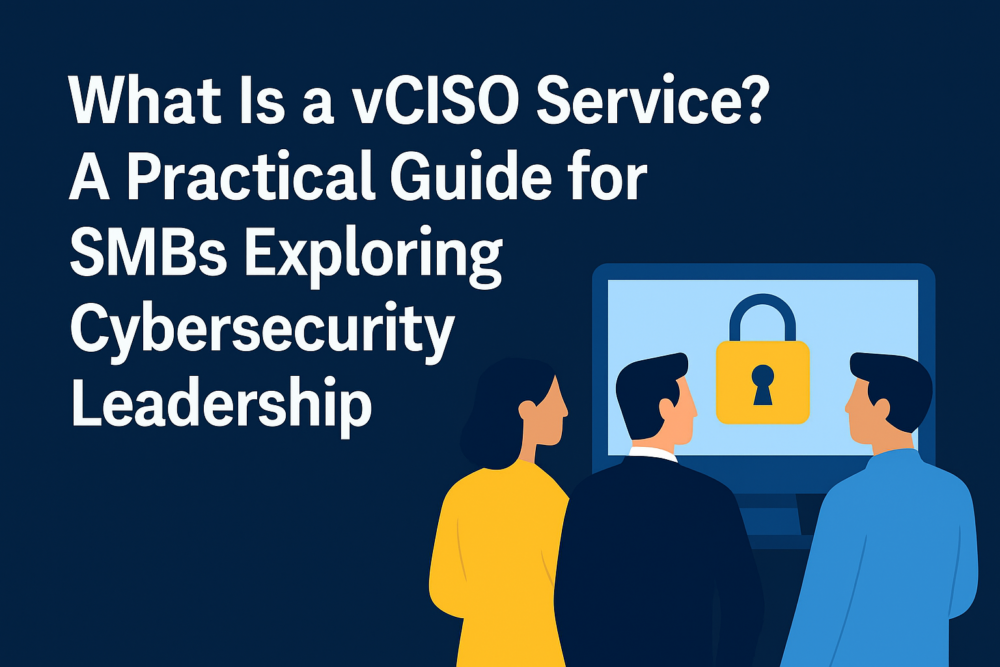vvCISO services are becoming essential as cybersecurity threats no longer target just large enterprises. Small businesses now face the same risks but are expected to respond with the same level of strategy and discipline—often without the same resources. vCISO services provide SMBs with the expert leadership needed to manage cybersecurity effectively, without the cost of hiring a full-time executive.
Hiring a full-time security exec isn’t the only option. Many businesses now bring in outside leadership—custom-fit to their size, budget, and current risk profile—without taking on the cost or commitment of another internal role.
That’s where virtual CISO services for small business fill the gap. Instead of hiring a full-time executive, companies can work with a senior cybersecurity strategist on an outsourced basis—someone who brings experience, structure, and real-world insight to the table.
A vCISO offers something most MSP clients are missing: someone who owns the big picture. Not just IT support, but actual cybersecurity governance—risk planning, compliance direction, and incident preparedness—without adding another internal hire.
Maybe someone’s asked you to tighten up your risk profile. Or maybe you’re just trying to make sense of what “cyber maturity” even means. Either way, this guide breaks down the basics—so you can move forward with something solid.
Understanding vCISO Services for Small Businesses
What does “vCISO” mean, and how does it work?
A virtual CISO is a senior cybersecurity professional who steps into a leadership role—just not as a full-time hire. Most of the time, they work on a contract or monthly retainer, helping guide your security strategy without joining your payroll. You’re not bringing in a technician. You’re gaining an advisor who can speak to business risk, regulations, board concerns, and vendor pressure—while still keeping the technical side grounded.
In most cases, a vCISO comes in through a managed service provider (MSP) or cybersecurity firm. But their job isn’t help desk support or tool management. It’s governance. That means:
- Building your cybersecurity roadmap from the top down
- Translating frameworks like CMMC, HIPAA, or NIST 800-171 into real-world action
- Identifying gaps, performing risk assessments, and shaping response plans
- Leading conversations with leadership, compliance auditors, or insurers
They fill the role of security leadership—on your terms. That flexibility is one of the biggest reasons small businesses are leaning into virtual CISO services. You can scale support to your budget and needs, without getting locked into executive overhead.
And here’s what really matters: a good vCISO doesn’t try to take over. They bring structure and focus—but they stay in sync with your goals, your people, and your level of readiness. That kind of alignment is hard to find. When the stakes go up, it’s exactly what you want in your corner.
Why More SMBs Are Turning to Virtual CISO Providers
The shift from “nice to have” to “need to have”
For years, small business owners assumed cybersecurity was someone else’s problem. Big banks. Healthcare giants. Government contractors. Not the local service shop with twenty employees and an aging server in the back room.
That assumption doesn’t hold up anymore. Now it’s the smaller firms getting hit with vendor security reviews and insurance paperwork full of technical questions. One client asks how you manage risk. Another wants proof that you have a response plan. And suddenly, the idea of needing a security leader doesn’t feel so theoretical.
Why vCISO services are gaining traction with SMBs
Here’s where things get tricky. Most SMBs can’t just go out and hire a full-time CISO. It’s not in the budget, and frankly, it’s not even the right fit. What they need is someone who understands both the business pressure and the technical risk—someone who can guide the security side without turning the company upside down.
That’s why virtual CISO services for small business are gaining traction. Not because it’s trendy, but because it’s one of the few models that actually works at this scale. You get leadership without payroll bloat. Strategy without committing to a long onboarding cycle. A second set of eyes that doesn’t need to be trained from scratch.
Most teams don’t realize how exposed they are until the questions start. A renewal application. A breach story that hits close to home. A red flag from a cyber insurer. That’s usually when the call goes out: Do we have someone handling this? A vCISO makes sure that, when that moment comes, you’re not winging it.
Comparing vCISO Services to In-House Cybersecurity Leadership
Full-time CISO vs. virtual CISO: What’s the difference?
On paper, the responsibilities look similar. Both roles handle strategy, policy, risk, incident response, and board-level communication. Both are expected to shape how an organization thinks about cybersecurity, not just react to alerts.
But how they show up inside the business is completely different.
A full-time CISO is a permanent member of the executive team. They attend leadership meetings, manage staff, report up the chain, and take ownership of everything from vendor risk to internal controls. For enterprise firms with complex networks and massive data footprints, that makes sense. It’s not a luxury—it’s table stakes.
But for an SMB? That kind of role is usually overbuilt for what’s actually needed—and severely out of budget.
Why virtual CISO services fit smaller businesses better
A virtual CISO, on the other hand, is designed for scale. You get leadership without the salary. Strategic planning without executive overhead. Instead of being in the building five days a week, they join meetings as needed, review systems on a schedule, and help set priorities that match your actual risk—not someone else’s checklist.
They’re also not tied to one fixed playbook. A good vCISO adapts to the business. One client might need help with compliance documentation and staff training. Another might need someone to manage a post-breach remediation plan. The flexibility is baked in from the start.
The real difference isn’t in the job description—it’s in the design. A full-time CISO stays embedded long-term. A virtual one steps in when needed, adapts fast, and moves with the business. That kind of flexibility makes more sense for smaller teams.
Key Benefits of vCISO Services for SMBs
Strategic cybersecurity without hiring full-time
You don’t need a full-time executive to build a serious cybersecurity program. What you need is experience—someone who’s worked through audits, led response plans, navigated compliance frameworks, and knows how to prioritize when budget and time are tight.
That’s what a virtual CISO brings to the table.
They don’t start with tools. They start with questions: What are you trying to protect? What could go wrong? Who’s watching that gap?
Building a roadmap that fits your business—not someone else’s checklist
From there, they help you build a roadmap that fits your business—not someone else’s checklist.
And unlike most project-based consultants, a vCISO sticks around. They don’t just drop a report and disappear. Instead, they lead planning calls, refine your policies, and flag problems you didn’t even know were building up. Their involvement is ongoing and strategic—not just a one-time audit. You get strategic coverage—but in a flexible, manageable way that doesn’t disrupt your structure or payroll.
That’s the appeal for most small businesses: real leadership, without the long-term headcount. And when the stakes rise—whether it’s a compliance deadline, a partner review, or a policy audit—you’re not scrambling to piece something together. You already have someone in your corner.
Risk management and compliance expertise on demand
One of the biggest gaps in most small businesses isn’t technology—it’s interpretation. The tools are in place, sure. There’s a firewall, endpoint protection, maybe even MFA. But when someone asks how risk is being measured—or whether those controls actually map to a framework like CMMC or HIPAA—things get quiet.
That’s where a virtual CISO steps in.
They understand how to take regulatory language, insurance requirements, and internal risk—and turn that into something operational. Not just a list of controls, but a real-world risk strategy. Something the leadership team can act on and auditors can follow.
And because they’ve likely worked across dozens of environments, a vCISO knows how to right-size the response. They don’t over-engineer the plan. They don’t push a checklist just to tick boxes. Instead, they help build policies that match your business model, address your actual threat surface, and stand up to outside review.
That kind of perspective is hard to find in-house—especially if you’re not in a position to build out a compliance team or a GRC function. With a vCISO, you don’t have to.
Budget-friendly access to seasoned security leadership
Hiring a full-time CISO can easily run into six figures—and that’s before benefits, overhead, or the months it takes to onboard someone who understands your industry. For most small businesses, that kind of spend just isn’t realistic. But the need for leadership? That’s still there.
Virtual CISO services offer a middle ground. You get access to someone with executive-level experience—often someone who’s managed enterprise environments, responded to incidents, and dealt with regulators—without taking on the full-time cost.
The model works because it scales. A growing MSP client might start with a monthly strategy session and a compliance review. Later, they might expand to include vendor risk assessments or staff training. You’re not locked into a static contract. The level of involvement adjusts as your business matures or the threat landscape changes.
And because a vCISO is usually working with multiple clients, they bring insight you won’t find from someone who’s been inside one environment for ten years. That outside perspective—combined with practical, on-the-ground experience—is often exactly what SMBs need to cut through complexity and move forward with clarity.
What a Virtual CISO Can Do for Your Business
Typical services included in a vCISO engagement
A virtual CISO isn’t just “advising” from the sidelines. They’re inside your security conversations—shaping direction, translating risks, and making sure someone’s paying attention to the things that usually slip through the cracks.
Depending on the engagement, they might start by rewriting your policies so they actually reflect what’s happening on the ground. Or they might lead a risk assessment that finally gets documented—one you can hand off to clients or insurers without scrambling to fill in blanks.
For businesses facing compliance pressure, vCISOs are often the person explaining what CMMC or HIPAA really requires, and whether your current setup covers it. They’re the ones who tell you which parts of the framework matter most, not just what the rulebook says.
And when something breaks—an outage, a security event, or just a serious question from a vendor—they’re the one who steps in with a plan. Not hypotheticals. Not theory. Actual next steps that match your business, your bandwidth, and your bottom line.
Sometimes they’re helping leadership craft a response for a board meeting. Other times, they’re guiding your MSP through hardening a system no one’s looked at in years. It varies. But the pattern’s the same: they make sure your cybersecurity program isn’t just functional—it’s defensible.
Customizing vCISO support services for different risk levels
Not every business needs the same level of security oversight. A manufacturing firm handling controlled unclassified information is dealing with a different set of threats than a regional law office trying to tighten up its client data protections. That’s why virtual CISO services aren’t one-size-fits-all.
The right engagement scales to the pressure you’re under.
Some clients only need guidance once a quarter—just enough to keep policies aligned and risk decisions on track. Others are in the middle of a compliance overhaul and need hands-on support weekly, sometimes daily. The flexibility isn’t just a perk—it’s a necessity for businesses that can’t afford to overcommit resources but can’t afford exposure either.
And the scope can shift over time. One month, the priority might be preparing for a vendor audit. A few months later, it’s rewriting access control policies or conducting a tabletop exercise. A good vCISO doesn’t lock you into a rigid plan. They adapt to what’s urgent, what’s strategic, and what’s starting to slip through the cracks.
That’s what makes the model work—especially for small businesses dealing with inconsistent demands and changing risk profiles. You’re not buying a service. You’re gaining an advisor who flexes with the stakes.
Choosing the Right vCISO Provider
What to look for in a virtual CISO partner
The title “vCISO” is easy to put on a website. But the reality behind it varies—sometimes a lot. Some providers treat it like a checkbox service: a couple reports, some templated policies, maybe a call once a month. Others actually bring executive-level thinking to the table.
The difference shows up fast once real pressure hits.
If you’re evaluating virtual CISO services for small business, start by looking at their track record. Not just how long they’ve been in cybersecurity—but whether they’ve worked with companies like yours. Do they understand compliance? Can they talk to your insurer, your client, your board? Have they ever handled a real incident?
It also helps to ask about how flexible the engagement model is. Will they adjust to your internal team’s capabilities—or just layer on more work? Can they operate within your existing MSP relationship, or are they trying to displace it?
And don’t ignore soft skills. The best vCISOs know how to speak business, not just tech. They can explain tradeoffs, help leadership make risk decisions, and build trust without fear-mongering. If a provider leads with scare tactics, vague threats, or buzzwords that sound impressive but don’t mean anything, that’s a red flag.
Common red flags to avoid
Not every vCISO engagement delivers what it promises. And for small businesses without an internal security lead, it’s easy to miss warning signs—until something important gets overlooked.
One red flag? You never speak to the same person twice. Some providers rotate resources constantly, which means nobody really learns your business or tracks long-term progress. If your “vCISO” feels more like a help desk than a partner, that’s a problem.
Another is the template trap. If the risk assessments, policies, or recommendations look like they were copied and pasted from another client—or worse, from a generic framework—they probably were. A good vCISO tailors strategy to your environment, even if they’re following industry standards.
It’s also worth watching how they handle tough questions. Ask how they’ve handled past incidents. Ask how they’d help your specific business prepare for a compliance audit or ransomware attack. If the answers are vague, overly technical, or full of buzzwords with no plan behind them, you’re probably not getting senior-level expertise.
Bottom line: if you’re paying for a CISO, even part-time, they should act like one. That means leadership, clarity, and accountability—not just slide decks and status reports.
Is a vCISO Service Right for Your Business?
Signs your business needs cybersecurity leadership
A lot of companies don’t realize they need a vCISO until something forces the issue. It’s usually not about budget—it’s about visibility. Nobody’s owning the security program. Questions are going unanswered. Risks are getting logged but not resolved. And leadership is assuming someone else has it covered.
Here are a few signs your business might be in that gap:
- You’re being asked for documentation you don’t have—by clients, vendors, or insurers.
- Your IT provider handles day-to-day security tools, but nobody’s guiding overall strategy.
- You’ve got multiple frameworks in play (CMMC, HIPAA, NIST), but no clear path through them.
- Incidents or near-misses are starting to pile up—but there’s no formal response plan.
- You’ve got internal staff doing double duty—managing systems while trying to make policy decisions.
If any of that sounds familiar, it’s probably not about overhauling your tech stack. It’s about introducing structure. A vCISO helps fill that leadership void—not by taking over, but by showing your team what to prioritize and how to build something sustainable.
How to evaluate your current cybersecurity maturity
Most small businesses have more security in place than they realize—and more gaps than they can see. The challenge isn’t guessing whether you’re “secure enough.” It’s knowing where you actually stand. That’s where a cybersecurity maturity assessment comes in.
This doesn’t have to be a giant audit. In fact, the best vCISOs keep it lean: what’s in place, what’s missing, and what matters most based on your size, industry, and threat exposure. It’s less about perfection and more about direction.
You don’t need to map every control to five frameworks just to get started. What you need is context. Are your access controls documented? Do you have a breach response plan that’s actually usable? Have you reviewed vendor risk in the past year—or ever?
These kinds of questions form the baseline for building something that scales. A vCISO helps make that visible. They translate vague concern into concrete next steps—without overwhelming your team or overspending on tools.
That’s why outsourced cybersecurity leadership works so well for SMBs. It bridges the space between “we don’t know what we don’t know” and “we’ve got a clear plan.”
Next steps for engaging a vCISO or MSP
If you’ve got an MSP in place, the conversation doesn’t have to be complicated. Just ask: Do we have anyone leading cybersecurity at the strategic level—or are we reacting as things come up? That one question usually reveals the gap.
Some MSPs offer vCISO support in-house. Others bring in outside leadership. Either way, if the answer sounds vague—or if nobody seems to own the bigger picture—that’s your signal to dig deeper.
If you’re not working with a provider yet, focus less on feature lists and more on how they approach risk. Are they asking about your compliance pressures? Do they understand the latest changes in cyber insurance underwriting? And when they talk about security, is it integrated into your business planning—or treated as just another technical service?
You don’t need to rush into a full vCISO contract. Even a short-term engagement or maturity assessment can give you direction. The goal isn’t to outsource everything. It’s to make sure you’re not navigating blind.
Learn More About vCISO Services for Small Business
If your business is reaching the point where cybersecurity can’t be an afterthought—but a full-time hire still feels out of reach—a vCISO might be exactly the middle ground you need.
You don’t have to tackle compliance, risk, or strategy alone. A good partner doesn’t just clean up the mess—they help you shape a program that makes sense for your business, your risks, and the way you actually operate.
📌 Explore Virtual CISO Services →
Whether you’re just starting your cybersecurity maturity journey or you need help shoring up what’s already in place, we can help you get there—strategically, affordably, and without overbuilding.
Frequently Asked Questions About vCISO Services
What does a virtual CISO do for a small business?
A virtual CISO acts as your senior cybersecurity advisor—someone who understands risk, compliance, and business operations, but works on a flexible, outsourced basis. For small businesses, that often means helping with cybersecurity program design, policy development, vendor risk reviews, and incident response planning. Unlike consultants who deliver static reports, a vCISO stays engaged—offering ongoing guidance that grows with your needs.
Is a vCISO only useful if we have compliance requirements?
Not at all. While many SMBs turn to virtual CISO services when faced with frameworks like CMMC, HIPAA, or NIST 800-171, plenty of others engage a vCISO to improve visibility, reduce exposure, or prepare for insurance renewals. If no one in your organization currently owns cybersecurity strategy, that’s a sign a vCISO can bring value—regardless of your compliance status.
How much does a vCISO typically cost compared to hiring a full-time CISO?
The cost difference is significant. A full-time CISO can easily cost six figures annually, not including benefits. Virtual CISO services are typically priced on a monthly retainer or project basis, and can range from a few thousand dollars per month to more, depending on the level of involvement. For most small businesses, a vCISO delivers leadership without the overhead.
Can a vCISO work with our internal team or MSP?
Yes—and that’s often the most effective setup. A vCISO provides high-level strategy, while your MSP or IT team handles day-to-day security tools and systems. When all parties are aligned, you get tactical execution backed by strategic oversight. It’s not about replacing your existing setup—it’s about strengthening it.
How do I know if a provider is offering real vCISO services, not just consulting?
Ask how they engage over time. True vCISO providers offer continuity, flexibility, and leadership. They’ll meet regularly, track progress, adjust to shifting risks, and act as part of your extended team. If the offering feels transactional—or if everything is templated and front-loaded—it’s probably just consulting dressed up as something else.











